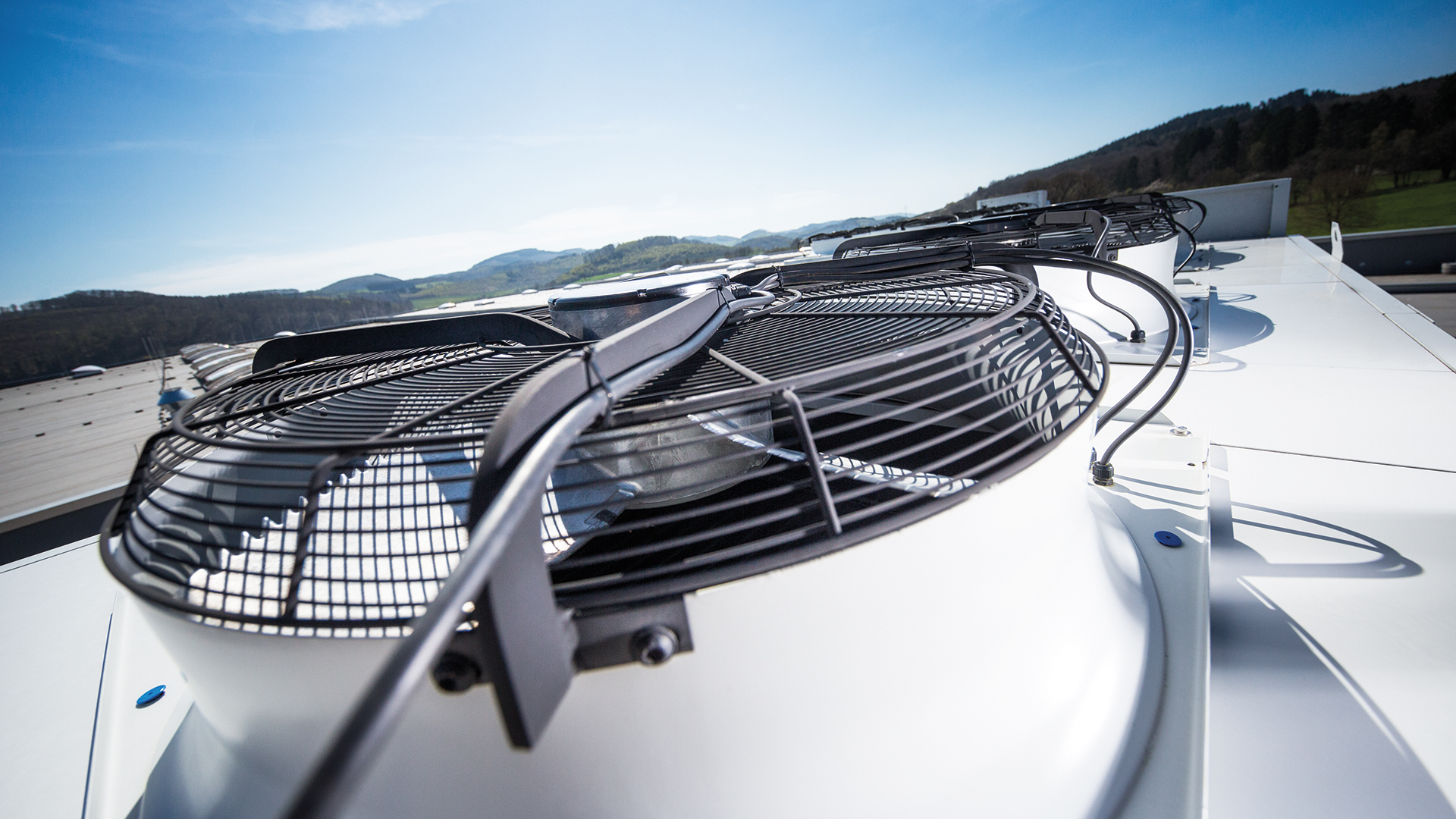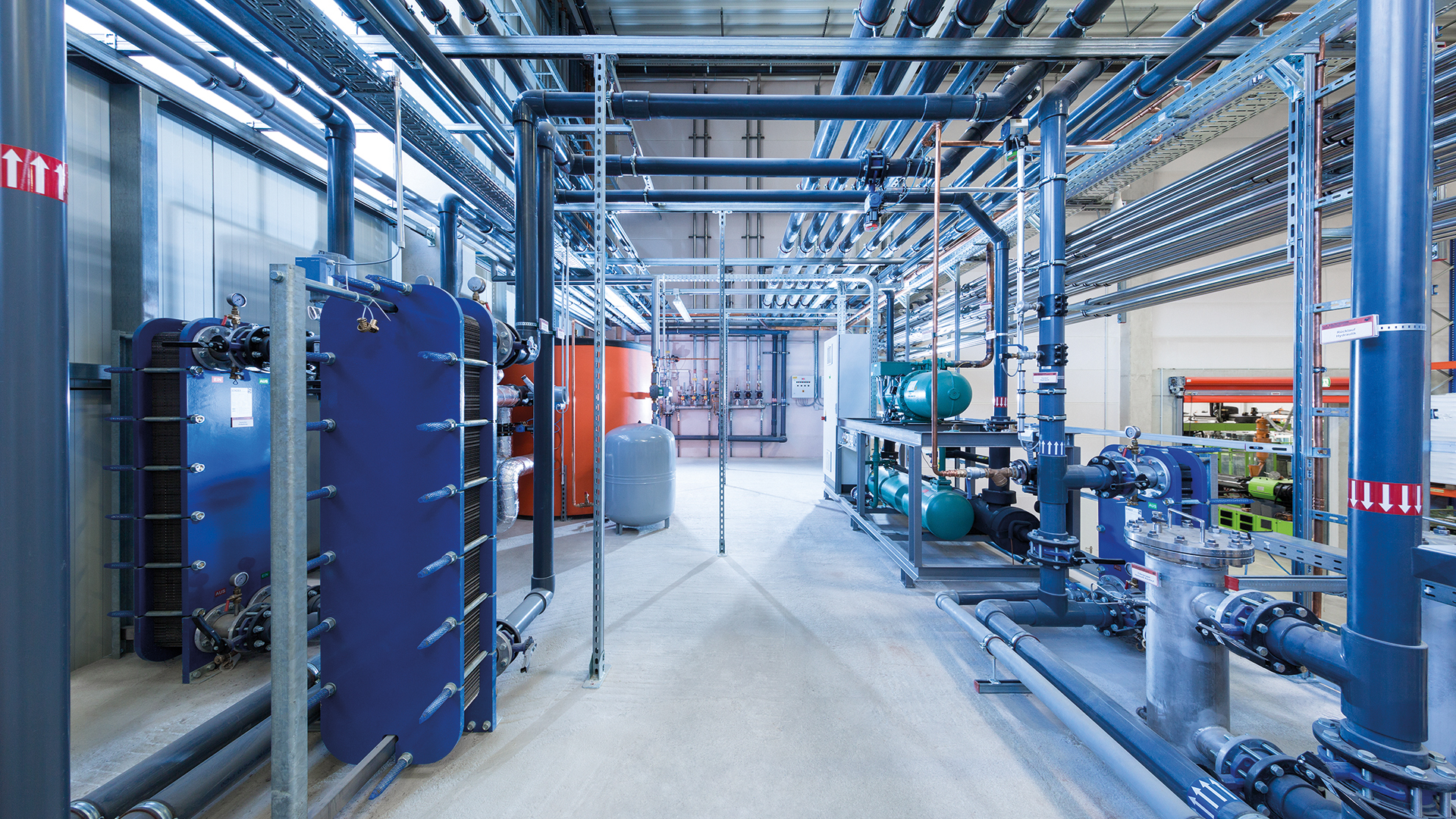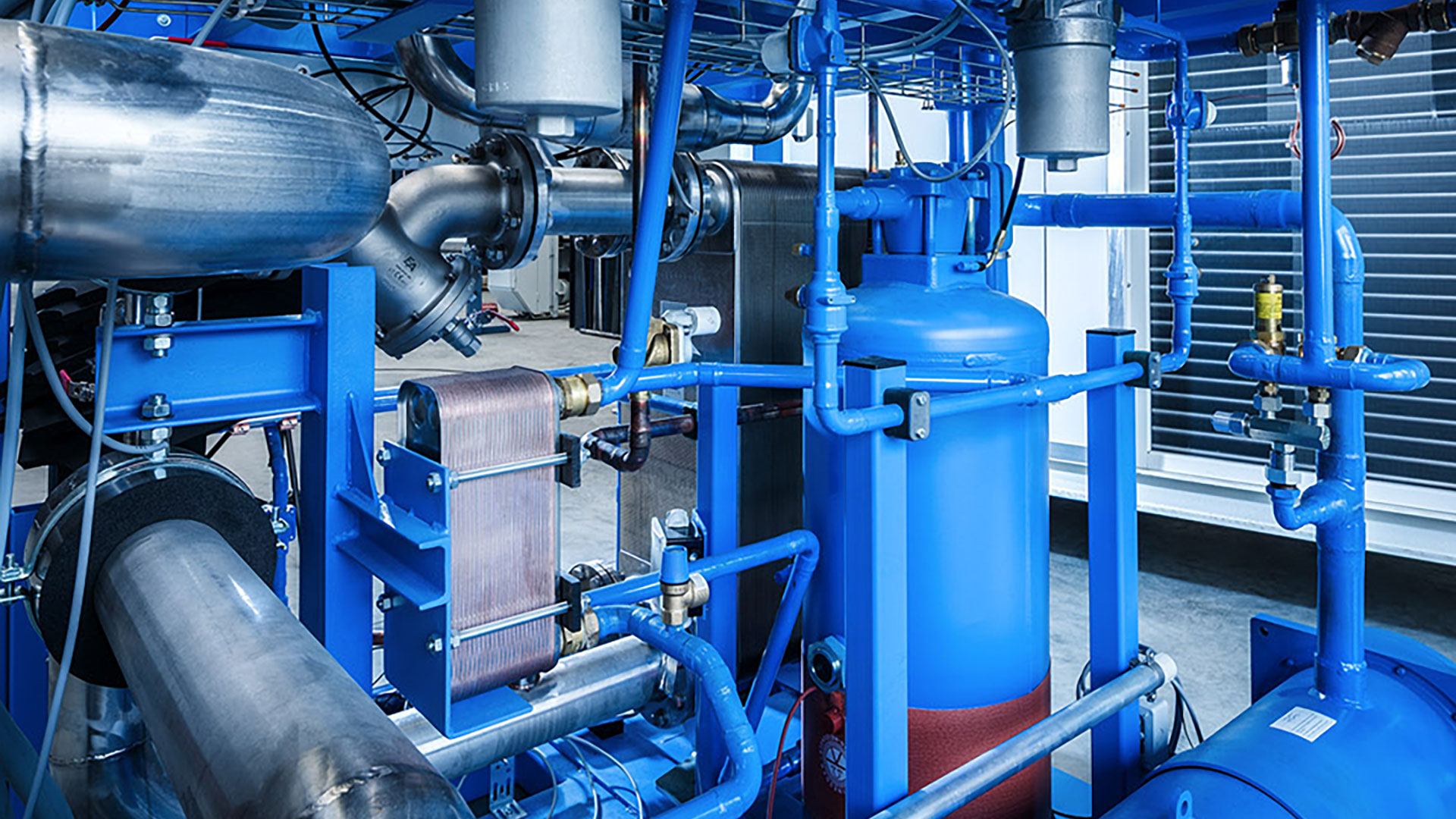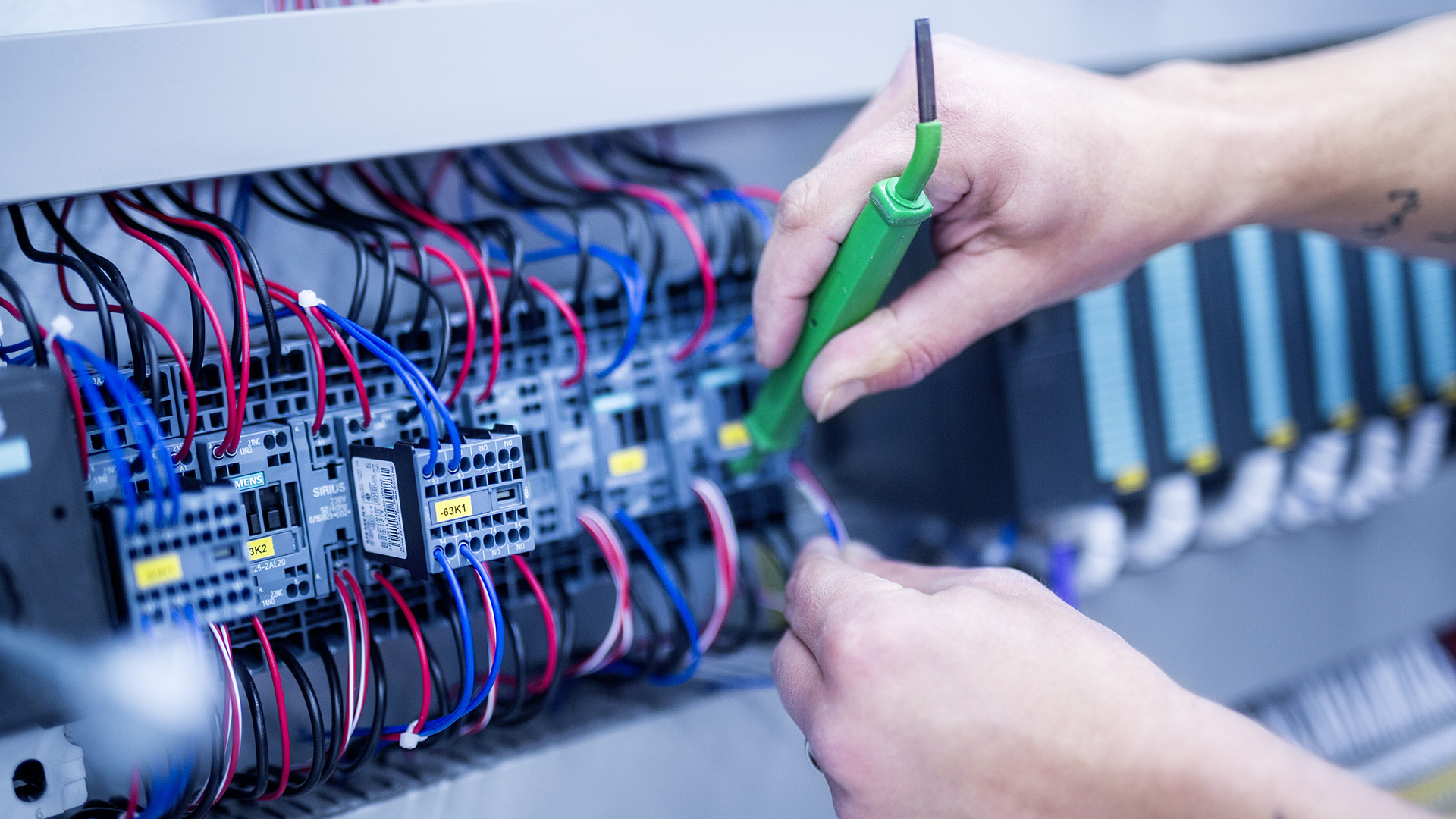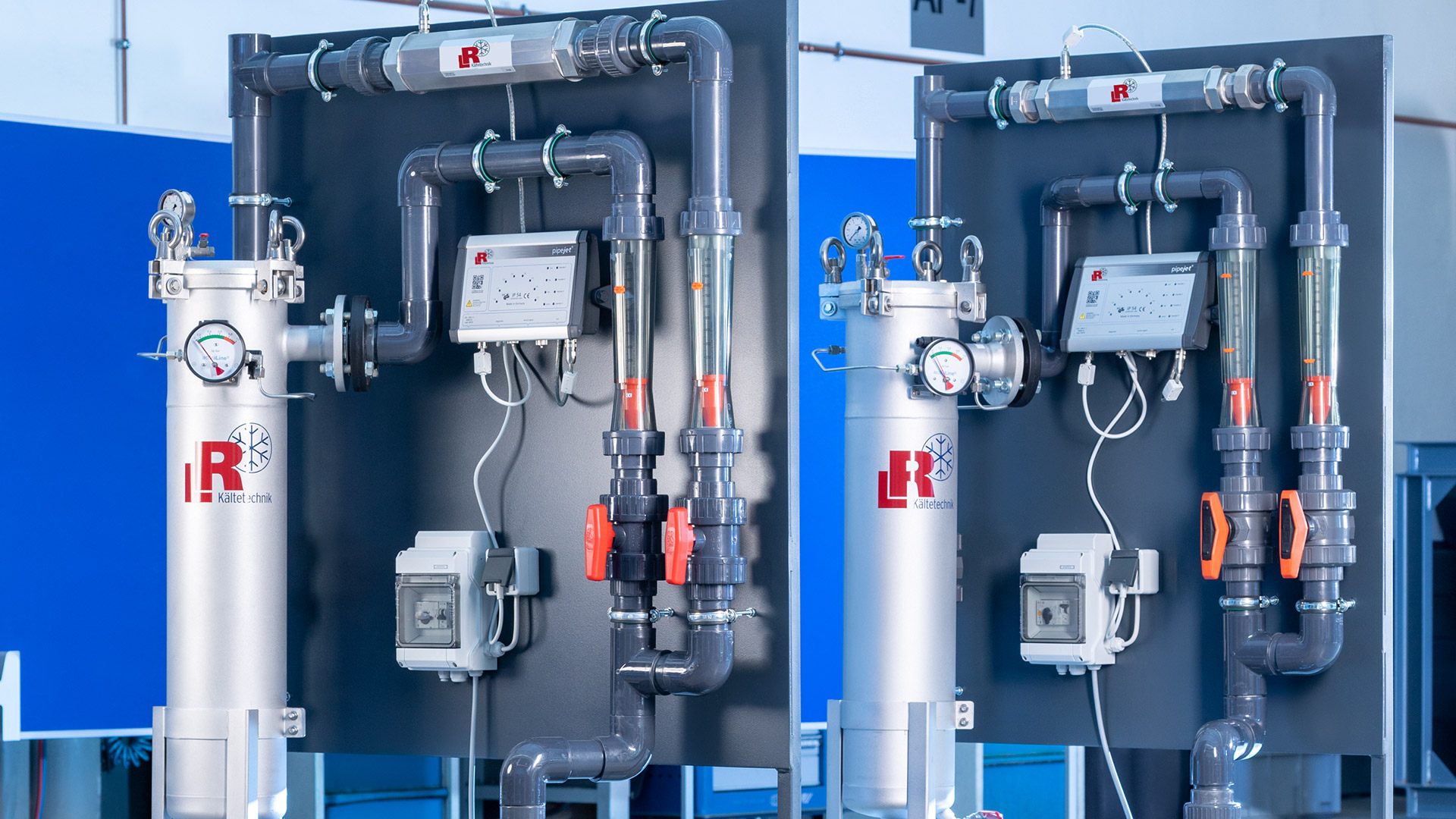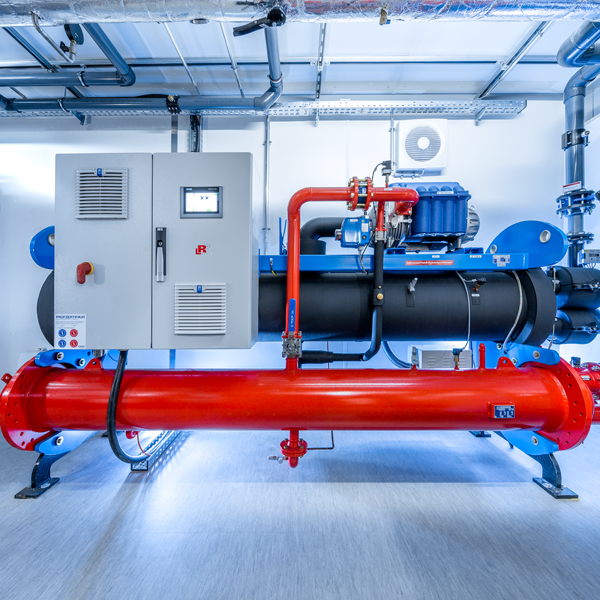Winkelmann Powertrain Components uses a new system for refrigeration that ticks several boxes with regard to highly efficient refrigeration technology. A CHP plant, an absorption chiller, a compression chiller with a Turbocor compressor, a cooling tower and a free cooling unit are involved (just to name the main components). The plant was designed by Getec and built and installed by L&R. The result: Refrigeration for production is provided on demand with high energy efficiency and high availability.
Sprockets, pulleys, vibration dampers, lines for injection systems, rotor and stator carriers: The product range offered by Winkelmann Powertrain Components to the automotive industry is broad and covers not only traditional engine and transmission technology, but also electromobility.
High cooling demand for various processes
One of the world’s leading suppliers of engine and transmission components, the company employs around 4,000 people and works for all the well-known automotive manufacturers, as well as many “Tier One” suppliers. The core technologies in metal processing used by the company at its headquarters in Ahlen, Westphalia, include metal forming and surface treatment. In plastics processing, the dominating methods are vulcanisation (e.g. of vibration dampers) and the thermoset technology developed by Winkelmann – a combination of injection moulding and pressing.
Almost all of these processes also require refrigeration, whether for cooling injection-moulded parts, quenching hardened gear components or steel shafts, or for surface finishing of metal components (?).
An innovative solution instead of “business as usual”
When the existing refrigeration system in Ahlen, Westphalia had reached the end of its service life, those responsible for purchasing and energy management decided not simply to purchase a new system, but to fundamentally rethink the entire refrigeration system. Their guiding principle was a desire for the greatest possible efficiency and to combine the internal energy supply with other processes. Tobias Messmann, Energy Manager in Strategic Purchasing at the Winkelmann Group: “We saw the opportunity to implement a demand-based refrigeration supply that works much more economically than a stand-alone refrigeration system.”
Three refrigeration systems with different operating principles
In order to achieve the optimum solution here, Winkelmann commissioned the project planning of such a system to the Getec Group. Getec, which specialises in engineering services in energy and supply technology, again turned to L&R Kältetechnik.
Together, Getec and L&R designed a refrigeration plant, in which several machines with different operating principles work together as required: a water-cooled Turbocor chiller, an absorption chiller and an air-cooled compression chiller. A cooling tower is also part of the overall system.
A CHP unit supplies heat for the absorption chiller
At first glance, this seems like a lot of effort for a clearly defined task, namely: the provision of cooling for extensive production. But it is clearly more economical than a single system, and this is due to the overall configuration of the energy supply. Stefan Sundermann, Head of Department and Project Manager at Getec Contracting GmbH: “We developed an overall concept for Winkelmann that provides for decentralised energy and heat supply via a combined heat and power plant.”
During the winter months, the CHP unit supplies heating for the premises and electricity. In summer, on the other hand, the heat portion of the energy generation is used to supply the absorption chiller, which has a cooling capacity of 300 kW (and a heating capacity of 380 kW). This means that the energy for refrigeration is available at virtually no cost.
Year-round basic supply via an absorption machine
The year-round basic supply of cooling is provided by an absorption chiller; the peak load is covered by a water-cooled chiller with a Turbocor compressor and a cooling capacity of 400 kW. It is controlled according to demand and operates very economically, both in a wide control range and under full load. This makes it the ideal peak load machine for Winkelmann’s requirements.
For winter operation: Free cooling unit
Another component for efficient cooling is the existing adiabatic free cooling unit, manufactured by Cabero, with a cooling capacity of 800 kW. It springs into action precisely when the CHP provides no or less energy for the absorption chiller: namely, in winter. In this case, nature provides the energy for cold generation. The fact that the free cooling unit can be sprayed at peak loads and high ambient temperatures ensures additional flexibility and economic operation.
Compression refrigeration system as a backup and for peak loads
An air-cooled L&R compression refrigeration system with a cooling capacity of 385 kW and two separate refrigeration circuits was installed as the third refrigeration system. It serves exclusively as a backup machine in case one of the other plants fails, and for absolute peak load coverage. This machine can also be controlled in a wide power range (25 to 100%) according to demand.
Re-cooling via a compact cooling tower system
The cooling water used in the chillers is re-cooled from 33 °C back down to 27 °C by a cooling tower system with a cooling capacity of 900 kW. Cooling air is supplied by speed-controlled fans, for which a maximum motor output of 15 kW is sufficient. Up to 130 m3/h of water can be re-cooled with high efficiency and then fed back into the machines. In order to cover the entire load and meet all demands, the cooling tower system and the free cooling unit can run in parallel.
Among other advantages, the overall system saves space as the backup refrigeration machine, the radial cooling tower system and the adiabatic free cooling unit can all be accommodated in the double container. The tanks, pumps, control cabinets, absorption chiller and Turbocor machine are all mounted in the container.
Practical operation: Efficient all year round
In practice, Winkelmann’s production has cold available all year round, which is generated extremely efficiently. In summer, the company’s own CHP unit supplies the exhaust heat generated during electricity production to the absorption chiller, which thus generates cold from heat. In winter, cold is taken from the environment – via the free cooling unit – and used to re-cool the cooling water.
The three chillers themselves each operate with high efficiency. Turbocor systems are known in the industry for the energy-saving refrigeration they provide, especially in the partial load range, and L&R compression refrigeration systems are equipped with numerous energy-saving components and detailed solutions.
Naturally, water treatment (e.g. automatic desalination, corrosion protection and biocide), filtration systems, as well as an 8,000-litre tank system for the cooling tower circuit are all included in the scope of supply.
At the centre: Control technology
Of equal importance to the energy efficiency of the individual machines and core components is the control of the entire system: A very key prerequisite for economic operation of the entire system is the optimal mode of operation, which only results from the interaction of all machines, as well as from the demand-driven operation of all components.
This is where control and regulation technology plays the central role. . L&R has extensive experience in this field. The construction of the control cabinets is not delegated to any outside party; it is performed in our very own factory, and the PLC programming is likewise carried out in-house at L&R.
The energy consumption of all system components is logged via energy meters. Both thermal and electrical energy are recorded in order to determine a daily performance figure and an annual performance figure.
Operation depending on the outside temperature
The entire cold and cooling water system operates according to the outside temperature. his means that the most energy-efficient mode of operation can always be implemented. All units with a common function (network pumps, chillers, re-cooling systems) are interconnected in terms of control technology. To give just a few examples of the detailed solutions that can be provided thanks to control technology: only one of the chillers at a time may operate, as long as it can cover the total cooling demand. If only small additional quantities are required, the backup machine can step in at short notice. At higher outside temperatures, i.e. when free cooling operation is not practical, the absorption machine runs, primarily because it uses the exhaust heat from the CHP as input energy for cooling.
Conclusion: A convincing concept
With this system, Getec and L&R have planned and installed an overall concept whose components mesh together almost perfectly and provide the currently required cooling demand in a highly economical manner. Moreover, thanks to the redundant design of the central machines, maximum availability is guaranteed. For an automotive supplier that makes binding delivery commitments to its customers, this is just as important as the efficiency of the refrigeration system.
Sector
Plastics & rubber industry
System solution
Container refrigeration systems
